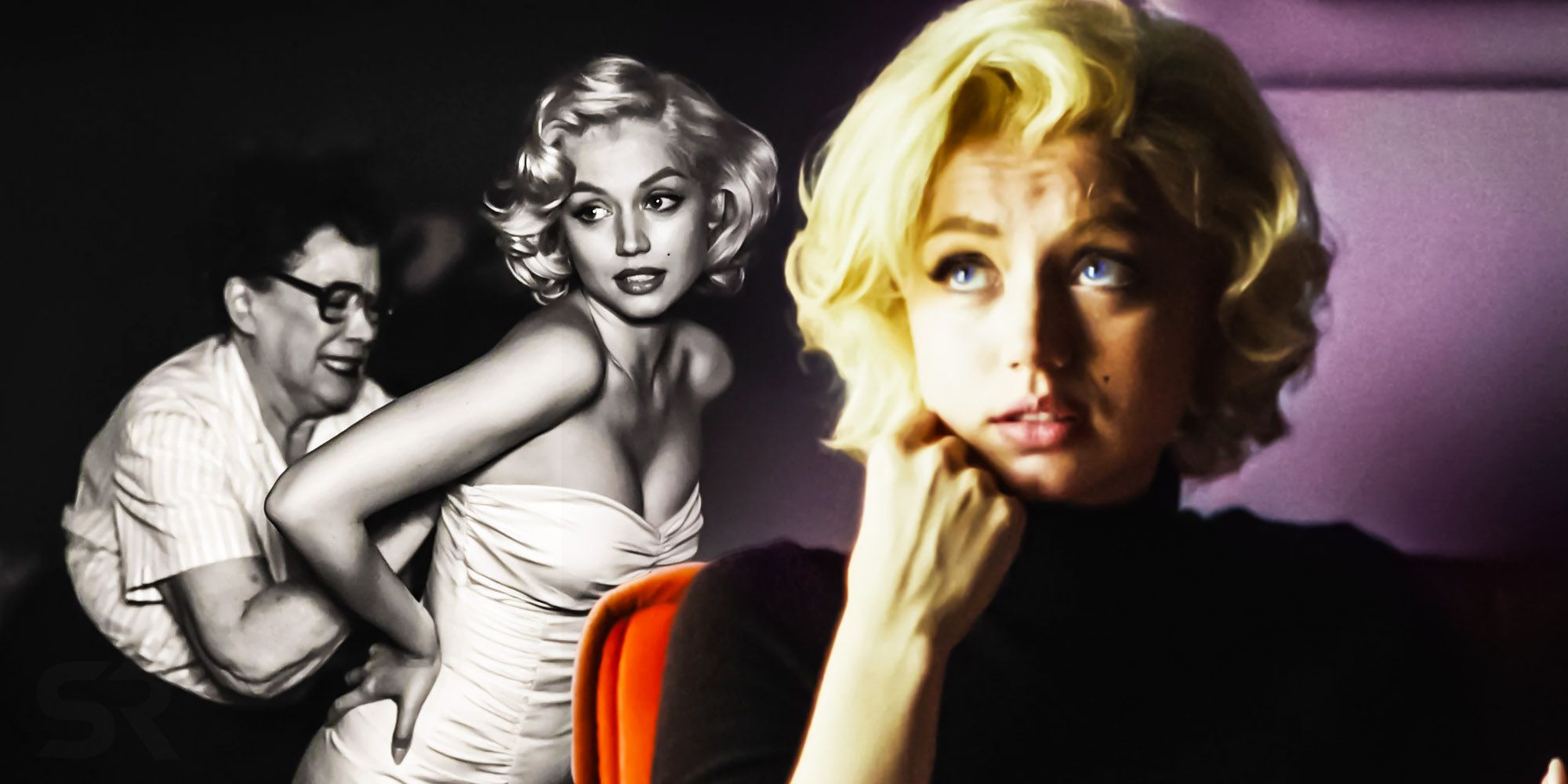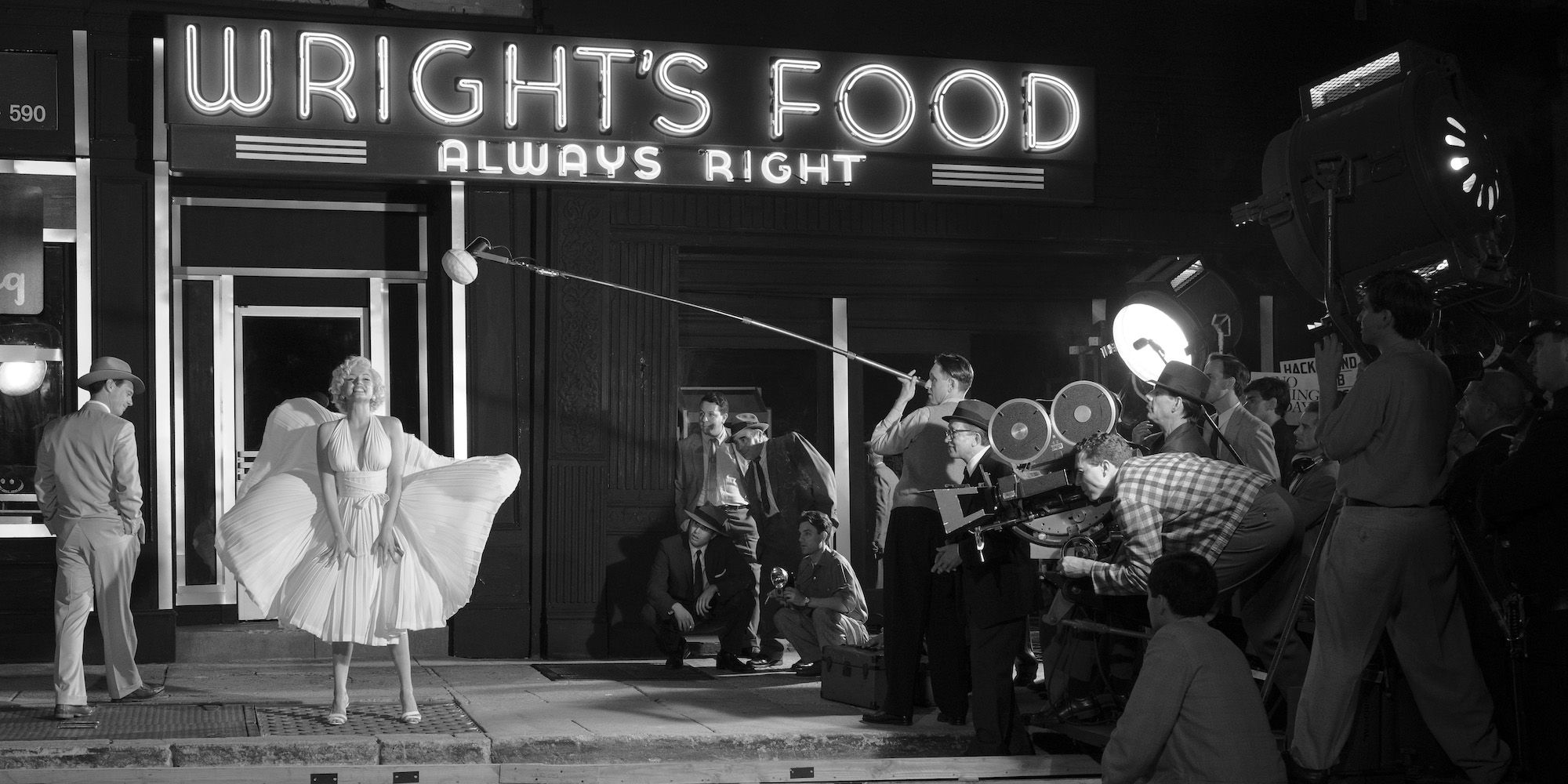Warning: This post contains minor spoilers for Blonde
Blonde, written and directed by Andrew Dominik, often shifts between color and black and white. The film, starring Ana de Armas as Norma Jeane/Marilyn Monroe, is based on the novel by Joyce Carol Oates. The NC-17 Netflix film, which explores Marilyn Monroe’s inner life, has been divisive among critics and viewers alike. At nearly three hours long, Blonde not only changes in color, but dabbles in different aspect ratios as well.
From Blonde’s opening scenes, Dominik makes the creative decision to film certain scenes in color and others in black and white. The latter gives the Netflix movie an old-school feel, and the addition of color leans into the 1950s era in which Blonde is primarily set. But why did Dominik choose to include both instead of sticking to one visual palette for Blonde?
In an interview with BFI, Dominik says the seamless shifts between Blonde’s color and black and white scenes have no real “story sense” to it. Rather, the director was simply trying to know Marilyn Monroe's life through visuals, which was helped along by the many images of her that were released both during and after her lifetime. It seems to be a creative choice made to give the film’s visual aesthetic a boost, to recreate certain moments so they would stand out more. While the director suggests there is no reason for the ever-changing shifts between black and white and color, the decision ultimately parallels the very films that Marilyn Monroe made, which were a combination of black and white and color throughout the 1940s and 50s. It’s also possible the film’s changing visual palette was used to amplify the emotional beats and to give off a facade of fantasy.
Why Blonde Changes Aspect Ratios
In addition to Blonde being in both black and white and color, the Marilyn Monroe drama also changes aspect ratios quite a bit. According to Dominik, one scene will replicate a four by three picture, while others will emulate various different sizes. It all depended on the kind of Marilyn Monroe photographs Dominik was adapting to the screen. All told, Blonde has four aspect ratios — 1:1, 1.37:1, 1.85:1, which is the one that is most used throughout the film, and 2.39:1. The film, despite its exploration of Marilyn Monroe’s life as Norma Jeane, is heavily reliant on the iconic visuals that have become synonymous with the actress’ career.
Certain scenes are filmed in such a way as to recreate photos or moments from Marilyn Monroe’s life that have remained prevalent in pop culture, such as the image of her flowing white dress during the filming of 1955’s The Seven Year Itch, which de Armas portrays in a prolonged scene. Since Blonde focuses so much on the actress’ iconography, its attempts to unearth Marilyn Monroe’s interiority through them makes sense in terms of the evolving aspect ratios. The variety of aspect ratios is meant to give viewers the sense that they are watching moments from Marilyn Monroe’s life that are forever frozen in time, much like the photos that have been taken of her. The combination of Blonde’s aspect ratios and color-to-black-and-white visuals create a sense of mystique for the audience as the film aims to know Marilyn Monroe beyond the images of her life.


